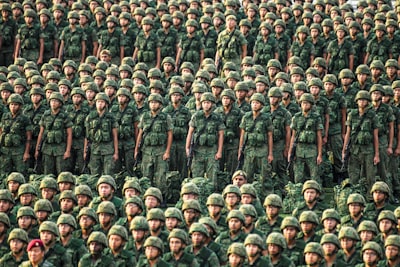Overview
The Karen National Liberation Army (KNLA) is the military arm of the Karen National Union (KNU), an ethnopolitical organization representing the Karen people in Myanmar (formerly known as Burma). The KNLA is one of the oldest and most prominent ethnic armed groups operating in Myanmar, seeking greater autonomy and rights for the Karen ethnic minority.
Historical Background
The origins of the KNLA can be traced to 1947, shortly before Myanmar’s independence from British colonial rule. Discontent with the new Burmese government’s approach to minority rights and autonomy, the Karen established the KNU and KNLA to pursue self-determination, using both political and armed resistance.
Structure and Leadership
The KNLA is organized into several brigades, each responsible for a specific region within the Karen-populated areas, primarily in southeastern Myanmar along the Thailand-Myanmar border. It is under the overall command of the KNU’s Central Standing Committee, with a chain of command extending down to battalion and company levels.
Objectives
The primary aim of the KNLA is to secure autonomy for the Karen people, protect communities from military aggression, and uphold cultural, religious, and political rights. Historically, the KNLA has called for a federal union in Myanmar in which ethnic minorities have significant self-governance.
Activities and Operations
For decades, the KNLA has been involved in intermittent armed conflict with Myanmar’s central government and military (Tatmadaw). The group has engaged in both defensive and offensive operations, patrols, and guerrilla warfare, often in remote, jungle-covered areas. With shifting alliances and changing conflict dynamics, the KNLA has also engaged in ceasefire negotiations at various times, though fighting has often resumed following setbacks in political talks or perceived violations by government forces.
Role in Myanmar Civil War
Since the military coup in 2021, which sparked renewed nationwide resistance against the junta, the KNLA has become a critical component of the anti-junta coalition. Alongside pro-democracy resistance forces, the KNLA has provided sanctuary, training, and operational support to other groups opposed to military rule. This has led to intensified clashes in border regions and a resultant increase in displacement of civilians into neighboring Thailand.
Humanitarian Impact
The ongoing conflict involving the KNLA has contributed to cycles of displacement, with thousands of Karen people and other ethnic minorities seeking refuge in Thailand and elsewhere. Humanitarian crises—stemming from military offensives, landmine usage, and disruption to health and education services—are frequent in KNLA operating areas.
International Relations
While the KNLA operates mostly within Myanmar, its activities have affected regions across the Thai-Myanmar border. The group has generally relied on local sources for arms and logistics but has also drawn international attention from human rights organizations for its role in the wider ethnic struggle in Myanmar.
Conclusion
The KNLA remains a significant actor in Myanmar’s ongoing internal conflict and a symbol of long-standing ethnic tensions. Its role continues to evolve in the context of the country’s shifting political landscape, making it central to understanding issues of autonomy, conflict, and humanitarian needs in southeastern Myanmar.

Comments
No comments yet. Be the first to comment!